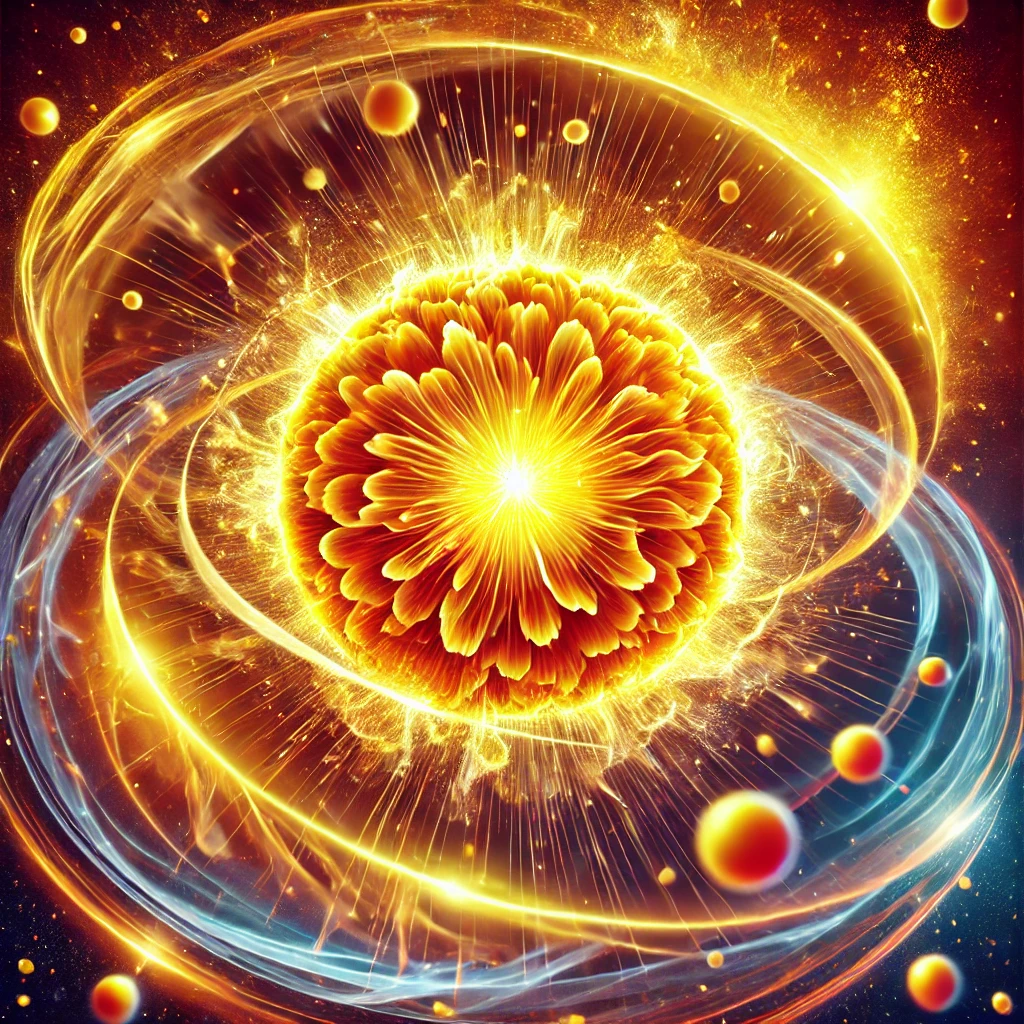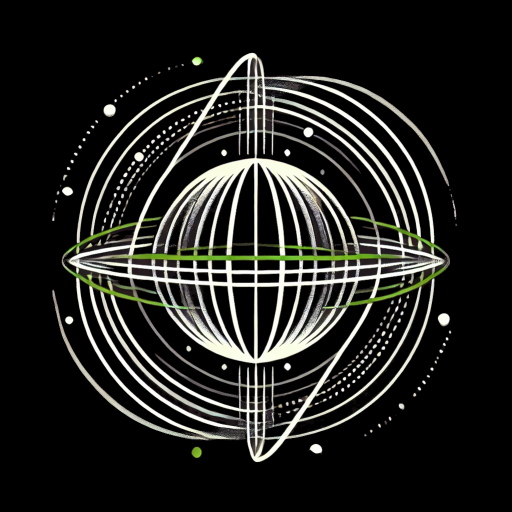
In the Vibrational Field Theory, the process of nuclear fusion—which powers the Sun and many other stars—can be understood as the merging of vibrational modes in the field. Nuclear fusion is the process by which lighter elements, like hydrogen, combine to form heavier elements, like helium, releasing immense amounts of energy in the process. This energy, which reaches Earth as sunlight, is what sustains life.
Let’s dive into how nuclear fusion works in the context of this theory.
Fusion in Simple Terms
In the Sun’s core, extreme pressure and heat cause hydrogen atoms to move so fast that they collide and fuse together. This fusion releases energy, which eventually travels out of the Sun and radiates into space. This is a well-understood process in classical physics, but in Vibrational Field Theory, we can look at it from a different angle—where fusion is a result of vibrations merging into new forms.
Vibrations at Work in the Sun’s Core
In Vibrational Field Theory, particles like protons and neutrons are actually just vibrational waveforms in the field. At the core of the Sun, where nuclear fusion occurs, the temperature reaches around 15 million degrees Celsius, and the pressure is enormous. These extreme conditions cause the particles (or vibrational modes) to move faster and collide more frequently.
Fusion as Merging Vibrations
When two hydrogen atoms (essentially, two vibrating protons) get close enough, their vibrations interact. Under normal circumstances, their positive charges would repel each other—like two ripples in a pond pushing away from each other. However, in the Sun’s intense environment, the speed of these particles is so high that they overcome their repulsion and collide.
This collision isn’t just the two protons bumping into each other; it’s the merging of their vibrations into a new vibrational mode. When these protons merge, they release energy—like two waves coming together to form a stronger, more energetic wave. This energy is then released as light and heat, which travels out from the core of the Sun to its surface and eventually reaches Earth.
Energy Release
In classical physics, the energy released in nuclear fusion comes from a small loss in mass when hydrogen fuses into helium. This mass gets converted into energy through Einstein’s equation:![]()
In Vibrational Field Theory, this energy release can be seen as the result of restructuring the vibrational patterns. The energy lost in the fusion process is actually the vibrational energy that stabilizes into a new, lower-energy configuration. The excess energy is radiated out as photons (light), which are also vibrational excitations of the field. So, the energy of the Sun is essentially the energy released from vibrational transitions in atomic nuclei.
The Chain Reaction of Fusion
Fusion in the Sun doesn’t happen once and stop—it’s a chain reaction. One fusion event leads to another. This is because when hydrogen nuclei fuse into helium, they release a great deal of energy, which makes the surrounding particles (other hydrogen nuclei) move even faster. This causes more collisions and more fusion events.
In the context of Vibrational Field Theory, you can think of this as a cascade of vibrational interactions. Each time a particle fuses, it amplifies the local vibrations in the field, increasing the energy of nearby particles and making more fusion likely.
The Sun as a Giant Vibrational Engine
When we observe the Sun, we see it as a glowing ball of gas. But in Vibrational Field Theory, the Sun is more like a giant engine of vibrational energy. Its core is constantly vibrating with intense energy as particles fuse together, releasing heat and light. The Sun’s surface is cooler than its core, but still, it vibrates, radiating this energy out into space.
Light as Vibration
The light we see from the Sun isn’t just a random emission of energy. It’s the direct result of vibrational interactions at the atomic level. Each photon (particle of light) is a packet of vibrational energy, which travels through space as a wave. When sunlight reaches Earth, these photons carry the vibrational signature of the Sun’s fusion process.
A Deeper Connection: Life on Earth
The energy that powers life on Earth—through processes like photosynthesis—originates from this vibrational fusion process. Plants absorb sunlight (vibrational energy) and convert it into chemical energy. This chemical energy, in turn, fuels the ecosystems on our planet. In this sense, all life is directly connected to the vibrational processes happening inside stars like the Sun.
How This Theory Solves Big Questions about Fusion
- Why Does Fusion Release So Much Energy? Traditional physics explains that fusion releases energy because of the mass-energy equivalence
 , where some mass is lost during the fusion of hydrogen into helium. In Vibrational Field Theory, this energy release comes from the restructuring of vibrational modes—as the vibrations combine, they release excess energy, which radiates out as light and heat.
, where some mass is lost during the fusion of hydrogen into helium. In Vibrational Field Theory, this energy release comes from the restructuring of vibrational modes—as the vibrations combine, they release excess energy, which radiates out as light and heat. - What Keeps Fusion Going? In the Sun, fusion is a chain reaction. As fusion releases energy, it increases the motion of nearby particles, causing more fusion. In Vibrational Field Theory, this can be understood as a feedback loop of vibrations: the more vibrations that merge and release energy, the more they stimulate other parts of the field to vibrate intensely, continuing the fusion process.
- What Role Do Vibrations Play? Instead of focusing on particles colliding in space, this theory focuses on how the vibrational modes of those particles interact. The fusion process is about how vibrations reinforce and amplify each other, leading to the massive energy output we observe from stars.
Real-World Implications
Understanding nuclear fusion in terms of vibrations also opens the door to new ideas in energy production. If we can better control the vibrational modes in artificial environments (like fusion reactors), we might unlock a cleaner and almost limitless source of energy for humanity—just like the Sun has been doing for billions of years.



Leave a Reply